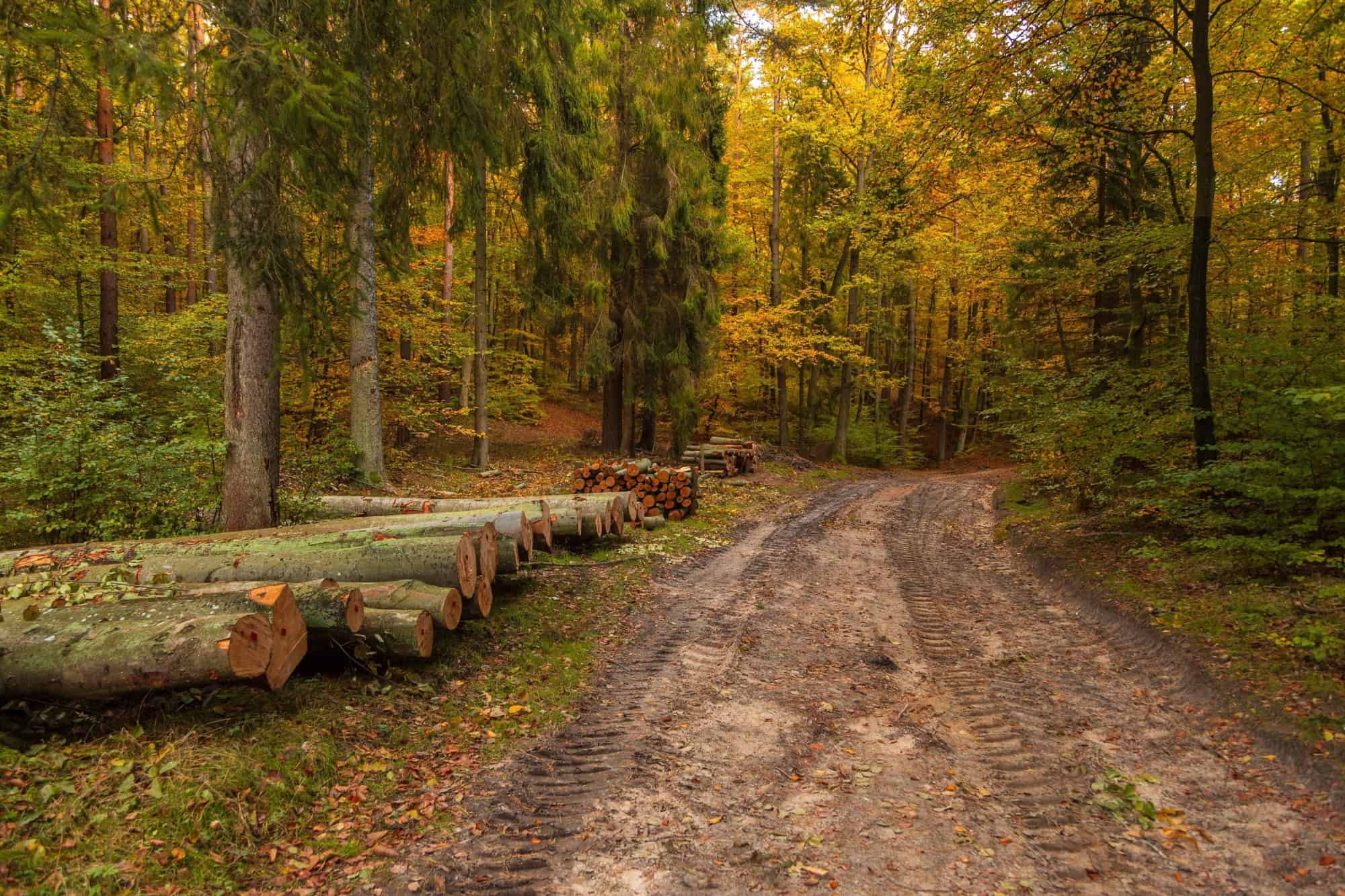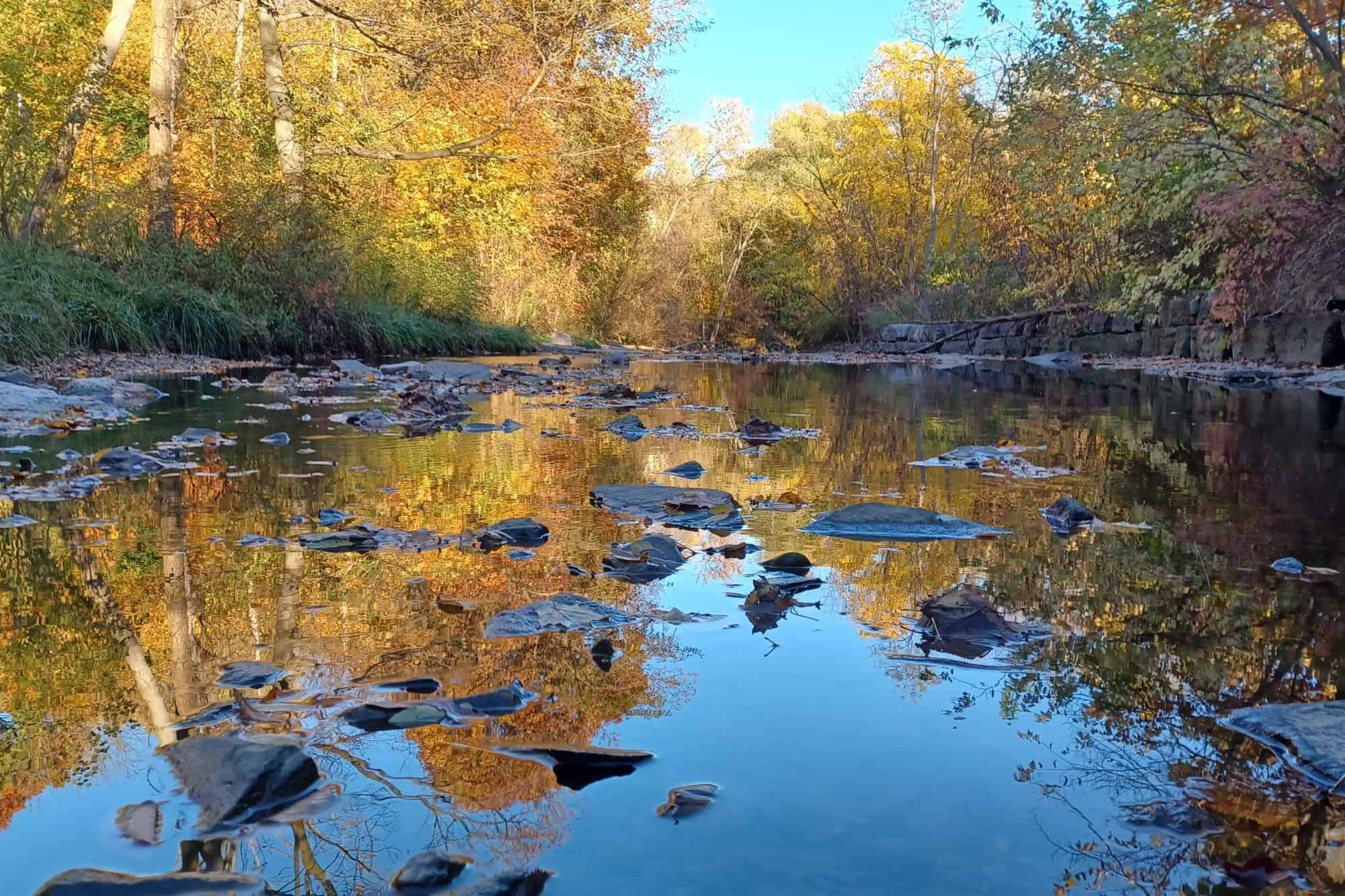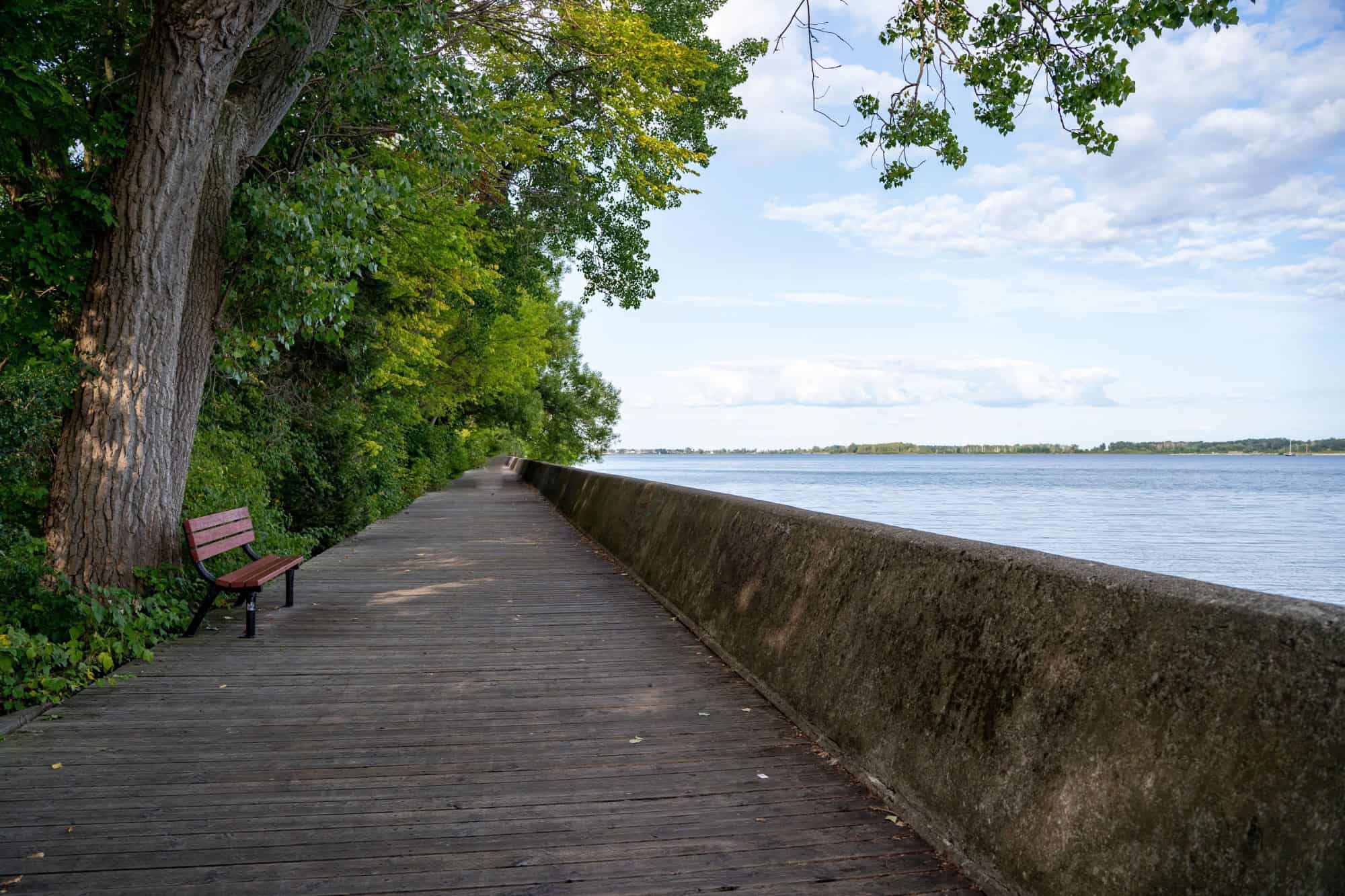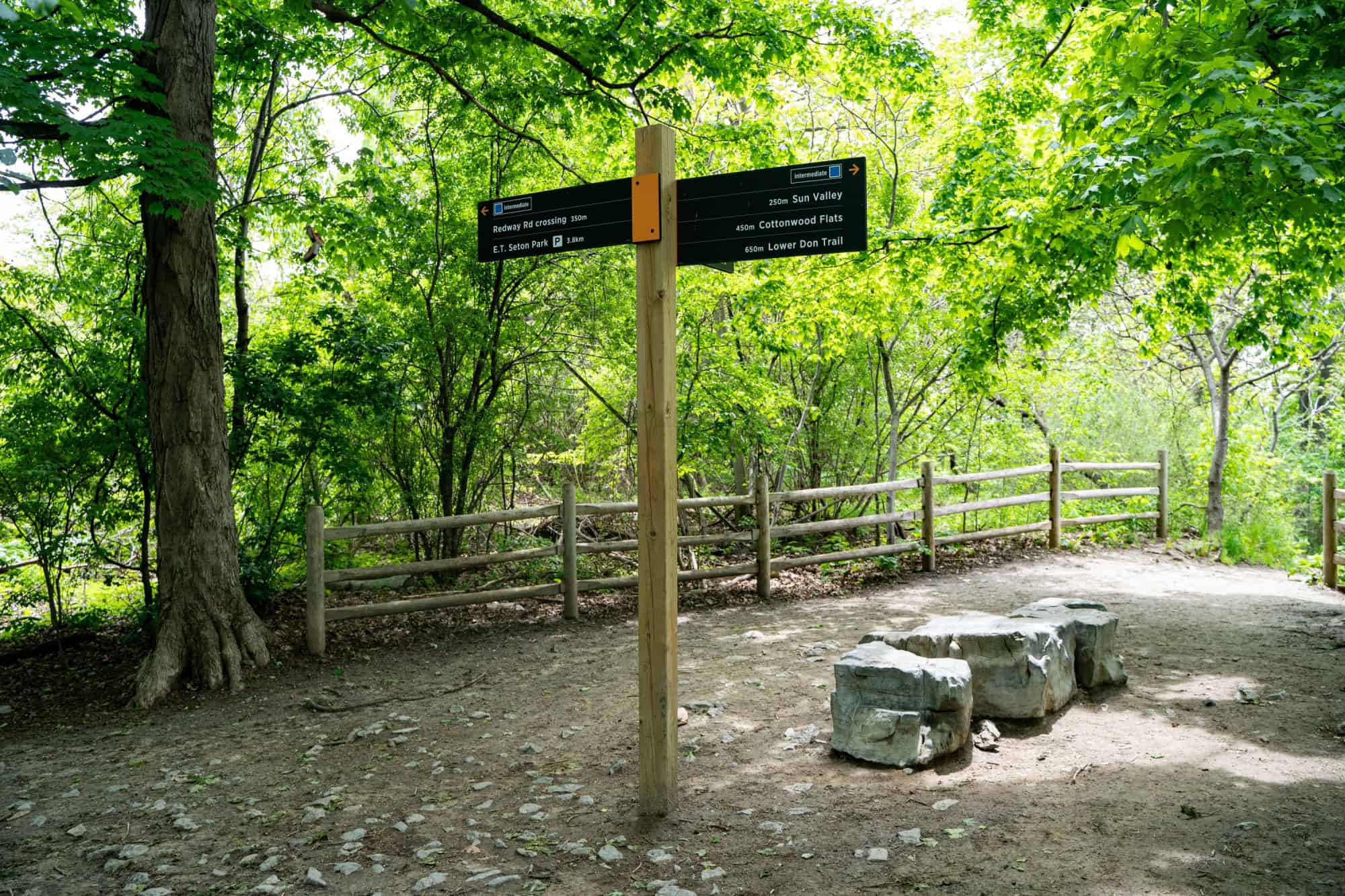Toronto’s well-known parks get crowded in October. However, tucked away are places where the leaves still crunch under your feet & you don’t have to weave through groups. They’re not secret in the strictest sense, as you can find them on city maps. Let’s find out about these hidden places.
Featured Image Credit: Shutterstock.
Key takeaways
You’ll learn all about:
- Small ravines that still feel wild
- Trails that connect straight from subway stations & campuses
- Forests that mix oak, maple & beech
- Ponds and boardwalks worth a weekend wander
Glen Stewart Ravine (The Beaches)

Go a block or two north of Queen Street East & you’ll be in a cool little forest pocket. Glen Stewart Ravine is only about 11 hectares, yet the wooden boardwalk that zig-zags through tall maples & oaks feels the perfect length, especially the Ames Creek trickling under it. The stairs make it a bit of a workout.
At the bottom, it’s quiet enough for you to hear birds & running water. It’s also shaded and fed by groundwater, meaning the colours hang on a bit longer here than they do on nearby streets. Definitely worth a visit.
Crothers Woods (Don Valley)

Crothers Woods is more than 50 hectares. That’s big enough to get properly lost in for an afternoon, whether you’re a hiker or a runner. It’s also a good place for mountain bikers, since the trails loop up & down the slopes above the Don River.
The forest itself has a lot of different kinds of trees, including sugar maples, hickories, beech & walnut. So, in October, you get the full range of colours across the canopy. The woods are between Pottery Road & Bayview, but when you arrive, it doesn’t feel like you’re in the middle of Toronto.
Humber Arboretum (North Etobicoke)

Honestly, Humber Arboretum is a real surprise for anyone who’s never been on Humber College’s north campus. You’ll find this 100-hectare arboretum just behind the classrooms, with ponds & manicured gardens, as well as trails that wind into naturalized woodlots.
The Garden of the Rising Moon has a small waterfall & curved bridges. As such, it’s a popular wedding photo stop. But it’s also just as nice for a slow walk when the maples turn red in fall, and it’s one of the best places to escape from the city for a bit.
Glendon Forest (Sunnybrook / York U Glendon)

You probably wouldn’t realize it from Lawrence or Bayview that there’s a 15-hectare woodland tucked behind the academic buildings. But half of Glendon’s campus is forest. It dips straight down into the Don Valley, where the trails feel wilder than some other ravines. They’re muddy in spots, with roots sticking out, but that’s part of the charm.
By far the best time to visit is on a fall morning. Why? Because the light goes through the maples & oaks in a truly stunning way. You can also follow the river without running into many people.
Philosopher’s Walk (U of T)

Sure, it’s not exactly a deep forest. But Philosopher’s Walk is one of Toronto’s most scenic shortcuts. The walk runs between the ROM & the Royal Conservatory, right along the path of the old Taddle Creek that the city buried long ago. You can still see the ravine’s shape, though, and it’s tucked away from Bloor Street’s noise.
In October, it genuinely looks like you’re at a European university quad, rather than downtown Toronto, thanks to stunning colours. These frame the heritage gateways & stone walls in a truly incredible way.
Colonel Danforth Park & Highland Creek (Scarborough)

That’s not all for the University of Toronto. Starting at Scarborough, you can walk straight into Highland Creek valley and see Colonel Danforth Park, which stretches along the creek. The paved trail eventually winds all the way down toward Lake Ontario.
Fall is the best time to visit because of the mix of red maples & sumac along the slopes. They have to be seen to be believed. Yes, it’s a longer walk than some of the inner-city ravines, but it’s also wide and open. That makes it good for a slow bike ride, too.
Nordheimer Ravine (Forest Hill)

Near St. Clair West & Bathurst is a leafy corridor that goes downhill beside Sir Winston Churchill Park. That’s Nordheimer Ravine. It links up with Yellow Creek and flows toward Rosedale Valley.
The path runs beneath the old trees & connects the residential streets to bigger parklands downstream, so it feels more like a locals’ dog-walking trail than a tourist spot. However, the fall colours on each side of the ravine are well worth visiting.
Taylor Creek Park (East York)

Looking to go on a steady walk or bike ride? Then look no further than Taylor Creek. This is a Don River tributary that has a flat valley & paved trail, which stretches for a couple of kilometres between Victoria Park & Don Mills Road. It passes under bridges and beside the shallow creek bed.
The path isn’t as steep or dramatic as some of the other ravines, yet the openness makes the golden leaves really pop. It’s quite popular with families who come for the wide paths. Birders also sometimes stop along the quieter side trails.
Sources: Please see here for a complete listing of all sources that were consulted in the preparation of this article.
Related Articles:
